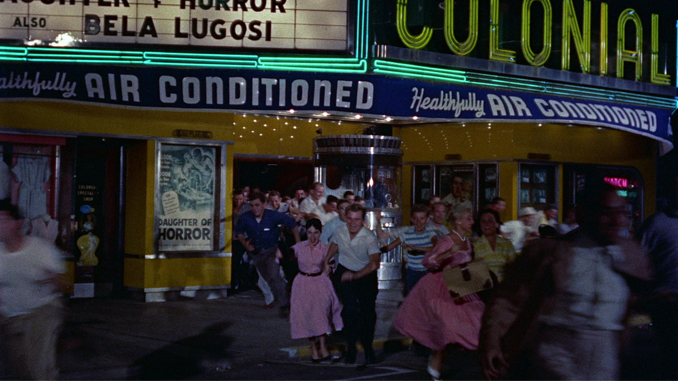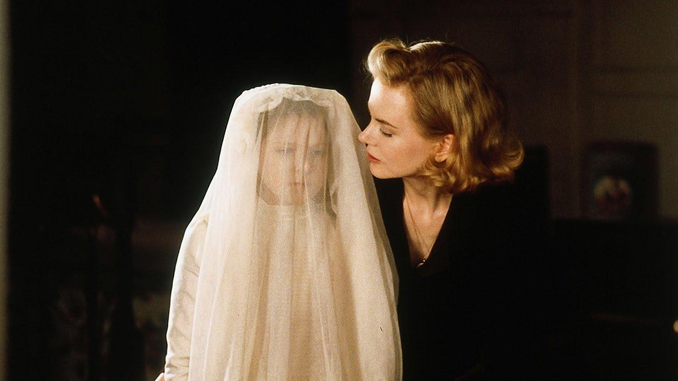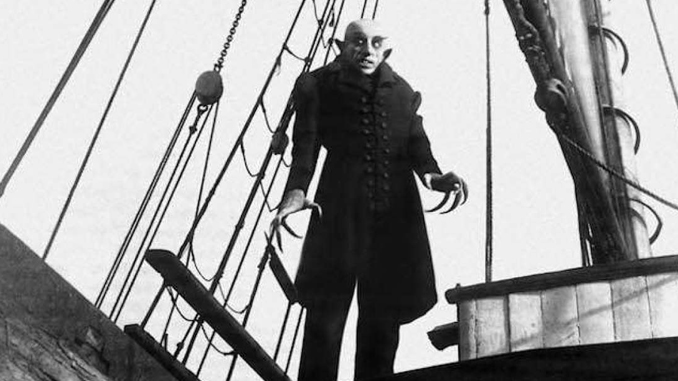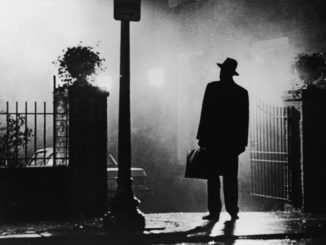
Written by Kevin Moncayo | Horror Film Guide
If you were to list all of the horror movies that you have seen throughout your lifetime, there is a solid chance that the majority of those films are American. Not only are most of the highest-rated horror movies made in the United States, but most horror films in general are made in America. But this might not be the only reason that the majority of horror you’ve seen has come from the U.S.
One could argue that filmgoers often focus on films from their own country, in their own language, because those films are the most accessible, get the most local advertising, and are easiest to understand. But by wearing these blinders as Americans, we’re missing out on a cache of beautiful, outstanding, and powerful foreign horror films that mix universally familiar tropes within the genre with unique examinations of their own culturally specific experiences.
In other words, we may disregard films we could have otherwise enjoyed simply because of the effort required in seeking them out, watching them, and fully understanding their various intricacies—ultimately, a fear of encountering what is currently foreign to us.
Luckily, this isn’t the barrier to entry that you might assume it to be. On a logistical level, the internet has collapsed borders, making finding and acquiring these films much easier than it has ever been before. And on a deeper level, as humans—no matter the culture—we’re fundamentally more similar than we are different. So, with some effort, we are able to experience these horror films that are both uniquely crafted, yet not so different from what we know and understand already about the human experience.
But why should you actually seek these movies out? What do you have to gain from them? Where should you even start? What should you do when you watch them?
Fundamental to our enjoyment of a horror film is both its ability to elicit emotion—most often, fear—and to provide some sort of message, which is either directly founded in the history and experiences of the time the film was made, or, more generally, in the major horror sub-genres of the period. This is a paradigm that is consistent across films in the United States and around the world, as they build upon their predecessors in some way or another. Thus, the case for why one would even want to seek out international horror movies begins with a desire to learn about others and experience either new genres or different interpretations of established ones.

In the 1950s, for example, horror movies in the United States were impacted by a fear of nuclear war. The Blob (1958), a cult classic that weaves sci-fi elements into the narrative, provides the viewer with a nuclear monster that represents such fears in a terrifying way. The director built upon the current horror genre by infusing this relevant, real-world fear into the story, resulting in something fresh and innovative, while also familiar and understandable.
But there is that flip-side where, although horror movies do contain a message, it is more about contributing to the horror sub-genre than to a more directly connected fear of the period. An example of this can be seen in films produced during the slasher period of the 1980s, which were building upon earlier slasher movies but were only truly as successful due to the conditions of that time.
A film like Sleepaway Camp (1983), for example, is more about putting a twist on the slasher genre than it is about creating something that speaks to the history of the period. Thus, the message here is about the life and vitality of the slasher genre, while building on the previous works of others in that specific sub-genre. Because of this, it is difficult to imagine this film being made today—let alone being a huge hit.
Although the messages being portrayed in these films are somewhat different, they still come together as time capsules for their respective periods. The aesthetics, settings, language, personalities, characters, interactions, and so on are indicative of not only those who created the films, but the society in which the movies themselves were made. Even in horror movies that try to portray the past or the future, we are witnessing these events and settings through the lens of someone from a specific time period. The House of the Devil (2009), for example (although being an homage to old slasher movies) cannot be identical to them because it is being made by someone impacted by newer movies, who is currently experiencing and being affected by the period in which they live.

But, even though I have purposefully used American horror movies to lay out this model, we could do the exact same list with international horror films. Movies such as I Saw the Devil (2010), for example, are staples of the South Korean revenge sub-genre, which is linked to the country’s unique history and past. Films like this are contributing to a long-standing group of movies that could only be made in this fashion by the South Korean people.
The New French Extremity movement that began in the 2000s, on the other hand, provided us with movies such as Martyrs (2008)—a French interpretation of body horror and exploitation films. These movies infused existing genres with French directors’ visions and styles to the point that they created their own individual sub-genre in the process.
Then, films like The Others (2001)—a Spanish horror movie set at the end of World War II—demonstrate an interpretation of an older gothic setting by creators impacted by Spain in the 2000s. Altogether, this model demonstrates the consistency of horror as a genre throughout the world and time.

In many ways, this is simply a process of making art in general, not specific to filmmaking in the United States. But, from an American perspective, the ability to see these international horror movies gives us the power to learn about what kinds of experiences others in foreign countries have had based on the horror sub-genres that have grown from their experiences.
Ideally, the pursuit of knowledge and the prospect of a greater understanding of others would be enough to seek out foreign horror movies, but that is not necessarily the case. Oftentimes, these are just byproducts after initial experiences with specific films you have enjoyed. What may actually have the ability to draw someone to international horror movies is the idea of what the movies themselves have to offer on the surface. In this case, hearing of the popularity of Suspiria (1977), for example, could be a wonderful introduction to the elements of Giallo, pushing people to find similar movies like them. Yet, although such a movie may be more common in horror or film circles, the average person may never have heard of such a film. In this case, the responsibility to seek out international horror films comes down to the individual filmgoer. Foreign movies can offer some of the most critically acclaimed experiences, new sub-genres, and unique interpretations of established sub-genres, but only if we choose to seek them out.

Let the Right One In (2008), for example, is a highly rated Swedish horror movie that brings new life and a sense of freshness to the vampire genre. This could be something very enjoyable for you, if not something a part of you never realized you were looking for, as it wasn’t on your radar.
We can even go more obscure and look at films like Valerie and Her Week of Wonders (1970), a Czechoslovakian surrealist horror film. Just from the information, you may have no idea what type of films the Czechoslovakians made, nor what a surrealist horror film even entails—in that case, you have no way of knowing as to whether you would actually like this film or not. Yet, you cannot even get to that point without first stepping out of your comfort zone and exploring what international horror has to offer. Look into new interpretations of current genres you enjoy, or possibly try out something unique that you may not currently have an opinion on. Horror films around the world have so much to offer, as you have seen, but it is your responsibility to actually go out there and learn about them.
Now, although you may have an interest in seeking out international horror movies, it is understandable that starting such a task of finding them can be somewhat daunting. One strategy may be to look into the foreign film selections on streaming services you already pay for right now. Raw (2016), for example, is one of the newest critically acclaimed French horror movies to come out and can be found on Netflix as of the writing of this article.

Another strategy would be to google genres that you already enjoy and adding “foreign” to them, such as “foreign vampire movies.” Here, you get films such as Cronos (1993), a Mexican horror movie with a unique take on the vampire genre. You may also just prefer to watch foreign horror movies at first that are in English if reading subtitles is an issue for you or seems intimidating. In this case, you can search for plenty of horror movies that are British, like The Descent (2005). Like the previous suggestions, this may seem overly simplistic, but the point is that it truly is that easy. If you come to understand what international horror films can offer, all it takes is your decision to take the plunge, and a little bit of searching.
If you are (hopefully) feeling a little bit adventurous, I would suggest going in as blind as possible. Start by looking into foreign horror films that are rated and regarded very highly but that you know absolutely nothing about. I would suggest that you take a look at my list or at other “best of” international horror lists, where you are bound to agree with the assessment of some of them. Picture it like advertising for the first American horror movies you heard of and knew nothing about.
Although you will find similarities in terms of the experiences of the people in the movies, as well as the horror tropes, there will be a lot of new concepts to sink your teeth into. Some you will like, and some you will not, but I am certain the same can be said of the American horror movies you have already seen. This is about exploring other genres and cultures that in many ways have a lot to offer, but still play by similar rules to what you are accustomed to. These films are not as foreign or “scary” as they might appear, and even if the thought of reading subtitles seems like a hassle, there is so much to gain from diving in, viewing a new or interesting perspective on horror, and expanding your tastes.

I assure you that whatever strategy you decide, you will find in some foreign horror films the benefits I am suggesting. There will be fresh takes on the horror genre, new and unique sub-genres, and a greater understanding of the world around you to acquire and enjoy in at least some of the films.
There is one more piece to the puzzle that I will suggest to possibly improve your enjoyment and understanding of these foreign films. Something that makes American films so pleasing to us is that they closely speak to our experiences and status as a nation. We inherently understand the world around films that are coming out today, as well as the struggles we are going through as a society in general. In the distant future, it is very likely that people will interpret our films quite differently, and in some cases, possibly miss aspects that seemed so obvious to us. The same can be said for the nuances of, and history behind, international horror films, which we may not necessarily be as knowledgeable about because we do not belong to the cultures that made them.
In the film Nosferatu (1922), for example, it is easy to fall in love with the film already just from the beauty of the German expressionism. Yet, if all you do is watch the movie, you are missing out on some aspects of the movie that would have the ability to improve the overall experience. Thus, the next step after deciding to watch a foreign horror movie, and then watching it, would be to learn more about it.
Yes, learning about the history and making of a film itself can be seen as a complicated and possibly unnecessary mission. Some might even argue that a film should only be examined in terms of what is on the screen. I might even agree with that previous sentence, but only in the case that I am familiar with the history, culture, and message of the film before me.

Take into account Get Out (2017), for example, not only am I familiar with the culture and time period this movie was made in, because I lived it, but I also know about and understand the racial issues that underlie the films overall message. Prior to watching Nosferatu (1922), on the other hand, I knew little of its placement in the horror genre and the culture behind it. I had no idea how it was groundbreaking for the horror genre, how they were essentially trying to make a Dracula film without the rights to it, and just the general idea of what was happening in Germany during the time after World War I.
Although my suggestion to learn more about an international film and its cultural background may seem daunting, even a little bit can go a long way. I significantly enjoyed Raw (2016) after viewing it, for example, but then I proceeded to watch an interview with the director, and it just blew me away with how much I had missed or simply did not know. In some ways, it changed my perspective about certain things in the film, and, in the end, surely made me appreciate the film more. Not only did the film seem far more relatable, it also helped me understand some of the small cultural nuances a little more, such as the general atmosphere at the school, which would seem insane to find in the United States. Thus, through this small additional experience, I was able to better place myself in the shoes of a French individual who might have inherently understood the cultural background of the film, and I enjoyed the film more deeply for it.
All in all, whatever you decide to look into or however much you research a film before and after viewing it, my hope is that I have at least convinced you to consider watching an international horror movie. I imagine that non-horror fans have seen little to no international horror films, so for them, there is still so much out there. Yet, for horror fans who, I imagine, have seen many of the popular ones, please get out of your comfort zone and try something different. We all have different tastes, and I have no idea what yours are, but I do know that there is something out there that you have not tried and you will love—don’t be too scared to do it!
Be sure to check out Kevin’s Horror Film Guide for a comprehensive guide to the films and directors that have shaped the horror genre over the past century.




Be the first to comment